This post may contain affiliate links. Please read our disclosure policy.
Chinese vegetables are my favorite go-to Asian leafy greens. In this Asian greens glossary guide, you’ll find popular Chinese veggies and some new variety with Mandarin pronunciation and visual photos, plus Chinese vegetable dishes and how to use them in my recipes!
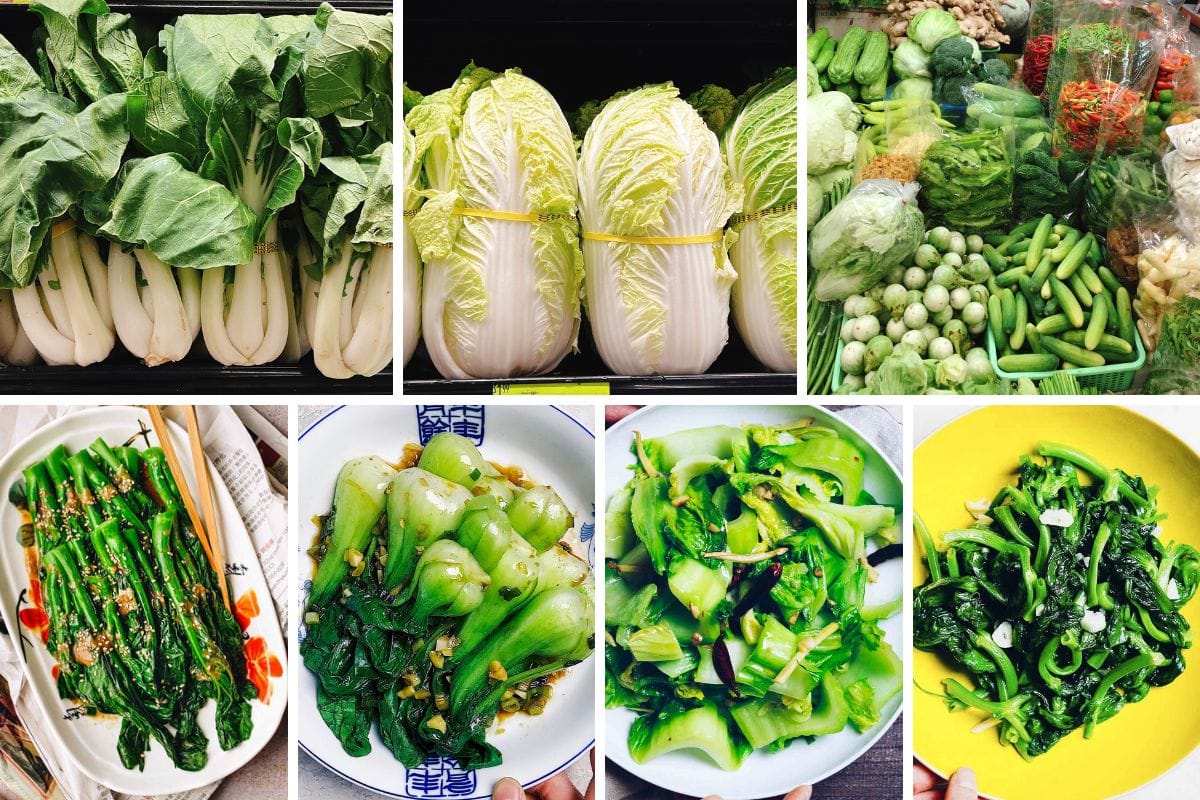
Table of Contents
- What are Chinese Vegetables
- Why we love Asian leafy greens
- How to prepare them
- Where to shop
- Bok choy (白菜)
- Bok Choy (regular sized) (白菜)
- Shanghai Bok Choy (上海白菜)
- Dwarf Bok Choy (奶油白菜)
- Little Bok Choy (小白菜)
- Recipes
- Chinese Broccoli (芥蘭)
- Chinese Choy Sum (菜心) or Yu Choy (油菜)
- Spinach
- Chinese Water Spinach(空心菜)
- Chinese Spinach or Amaranth or en choy (苋菜)
- Taiwanese Spinach – Táiwān bō cài (台湾菠菜)
- Malabar spinach (木耳菜)
- Cabbage
- Chinese Celery (芹菜)
- Chinese Mustard Greens (芥菜)
- Pea Shoots, Snow Pea Leaves, or Pea Tips ( 豌豆苗)
- Tong Ho – Edible Chrysanthemum (茼蒿)
- Yam Leaves – Dì Guā Miáo (地瓜苗)
- AA Choy – AA Cai (AA 菜) or You Mai Cai (油麦菜)
- Tatsoi (塌棵菜)
- Watercress (西洋菜, xī yáng cài)
- Celtuce (莴笋, wō sǔn)
What are Chinese Vegetables
Chinese Vegetables include a wide variety of leafy Asian greens, root vegetables, legumes, and members of the gourds family – Chinese eggplant, winter melon, bitter melon, fuzzy melon…etc.
The most commonly known Chinese veggies in the West are Chinese broccoli, napa cabbage, bok choy, baby bok choy, Chinese eggplants, and Asian cucumbers, among others. These vegetables are becoming more and more popular in the Western markets.
Therefore, in this post, you will find a list of popular vegetables in China/Asia, with English names and pictures provided, plus information on where you can find them in your local grocery stores. We will focus particularly on types of Chinese greens.
Why we love Asian leafy greens
- Nutritious – these dark leafy Asian greens are full of fiber and vitamins. They are the perfect vessel to expand your fiber intake variety.
- Flavorful – the vegetables come in various textures and flavor profiles.
- Easy to prepare – you can blanch, saute, and stir-fry, and some of them are great for salads, too.
How to prepare them
As a general rule of thumb, most of the Asian vegetables in your local Asian markets are not pre-washed. This is because the vegetable turns wilted and mushy after they are in contact with water if they aren’t cooked right away. Therefore it’s very important that you give the veggies a few good rinses by plunging them into a big bowl of water several times until you don’t see any dirt on the leaves and in the water.
Where to shop
To find the most comprehensive selections of Asian vegetables, your local Chinese markets (usually bigger ones) will carry most of the vegetables we discuss in the lists below.
Korean grocery stores (H-mart) and Japanese grocery stores (such as Mitsuwa) also carry many popular Chinese and Asian vegetables.
I’ve seen more and more vendors carry Asian leafy vegetables in my local Farmers’ market. The selections are usually more limited but in general, you can find some popular ones – Taiwanese cabbage, napa Chinese cabbage, Yu choy sum, Aa choy, Taiwanese spinach, Bok choy (or pak choy), and sometimes snow pea leaves.
The last one started during the Pandemic – online delivery. I’ve seen more and more vendors deliver Asian vegetables to your home. The company – Asian Veggies – is a perfect example. If you live in NYC and long island, you can go to their website and select the types of Chinese leafy greens, root vegetables, aromatics, dried goods, and many more. It’s a family-owned business and the son helped his father bring the business from a wholesaler to household customers.
Bok choy (白菜)
Bok choy literally means White Vegetables. The Mandarin pronunciation is bái cài. Bok choy (or pak choy) is a Cantonese pronunciation and it’s a general and vague way to refer to a very broad range of types of vegetables.
There are three sizes of Bok Choy – regular, medium, and baby. The most commonly known “bok choy” Is actually called Shanghai bok choy or green bok choy which comes with green stalks and leaves.
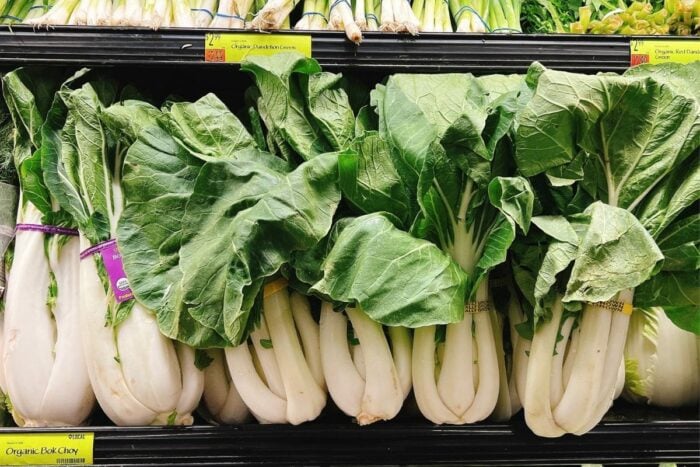
Bok Choy (regular sized) (白菜)
This is a large-sized bok choy that has white stalks and green leaves. It’s a mature version of baby bok choy. The texture is more fibrous and therefore it’s best to dice it up for stir-frying. Learn more on how to cut bok choy.

Shanghai Bok Choy (上海白菜)
Also known as green bok choy, this is the most common type we see in Western markets. It has green stalks and leaves. The locals sometimes also refer to this vegetable as Chingensai (pronounce chin-gen-sai). The name describes the color of the vegetable.
Shanghai bok choy comes in 2 sizes – medium or baby. The medium size can range from 8 to 12 inches in length whereas the baby ones are under 6 inches.
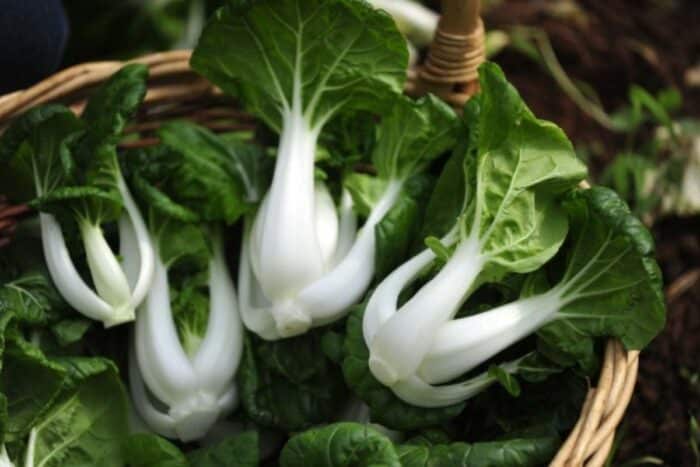
Dwarf Bok Choy (奶油白菜)
Dwarf bok choy (also known as cream bok choy) usually comes in baby size. They have white stalks and curly leaves in deep green color. The flavor is slightly milder than Shanghainese bok choy and has a slightly sweeter taste.
Baby Shanghai bok choy and dwarf bok choy are the most popular choices in Chinese cooking because of their tender and crisp texture. You can cook them in soup, salad, bok choy stir-fry, or blanched, or even make bok choy in air fryer. You can also enjoy them raw or lightly fermented like my bok choy kimchi.

Little Bok Choy (小白菜)
This vegetable looks similar to medium-sized bok choy but the stalks are in white color and the texture is more tender. This vegetable is very popular in Taiwan and is often served in soup or stir-frying. You can dice it to bite sizes before cooking.
Recipes
You’ll find many bok choy recipes on my blog. It’s one of my favorite go-to Asian vegetables. Here are a few examples of the dishes you can try – bok choy dim sum, Thai bok choy salad, bok choy soup, bok choy stir-fry with shiitake, bok choy salad, roasted bok choy, and chopped bok choy salad.
Chinese Broccoli (芥蘭)
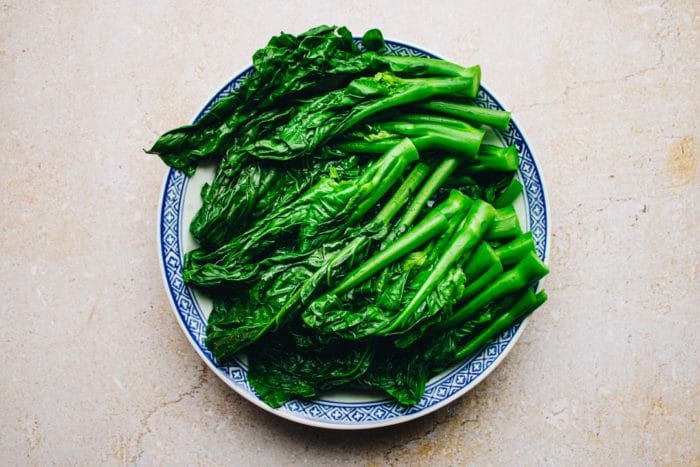
Chinese broccoli, jiè lán in Mandarin, is one of my favorite Chinese greens among all. Also known as gai lan or kai lan (Cantonese pronunciation), Chinese broccoli has long green stems and dark green leaves. Some people compare it to broccoli rabe but Jie lan is much less bitter than broccoli rabe.
When selecting Chinese broccoli, look from the bottom tip end of the stems and the overall size of the broccoli. You want 1) the stems don’t look brittle and dry, 2) the stems aren’t too thick, and 3) the leaves don’t come in yellow flowering.
The ones that come with flowers mean they are old and with tough fibers to chew. When cooking, you want to trim the bottom end about 1/4 to 1/2 -inch away and separate the stems from the leafy parts and saute them separately. This is because the thick stems take a bit longer time to cook than the leaves.
Recipes
My favorite way of enjoying this nutritious Asian vegetable is to stir-fry gai lan with a little garlic and salt. Blanched Chinese broccoli with oyster sauce is another super popular dish. My homemade vegetarian oyster sauce is the perfect condiment to go with blanched Chinese vegetable dishes.
Chinese Choy Sum (菜心) or Yu Choy (油菜)
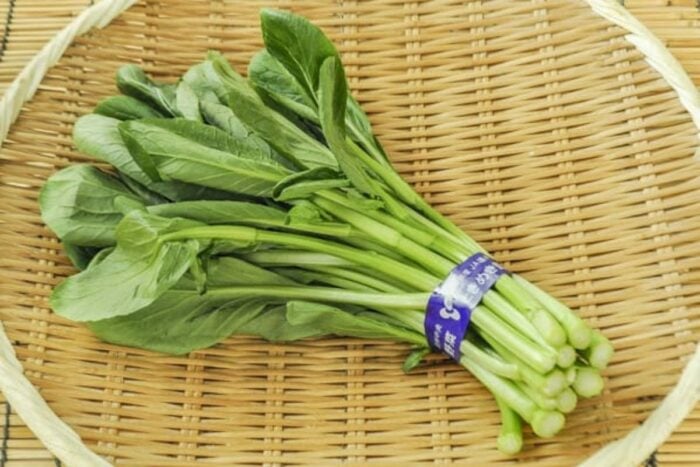
Choy Sum (or cài xīn in Mandarin) literally means vegetable heart. It’s also known as Yu Choy (or yóu cài 油菜 in Mandarin). Although this vegetable might look similar to Chinese broccoli the two are quite different. Choy sum is tender and sweeter than Chinese broccoli. The stems are less firm in texture than gai lan.
Yu Choy also means “oil vegetable” because it’s in the rapeseed family and this vegetable can also be used to produce oil. We often add yu choy to gluten-free wonton soup or blanched and served with vegetarian oyster sauce.
Spinach
While Spinach doesn’t seem to be a leafy vegetable that’s in the category of Chinese cuisine, there are actually a few different types of Chinese spinach you’ll find in stores.
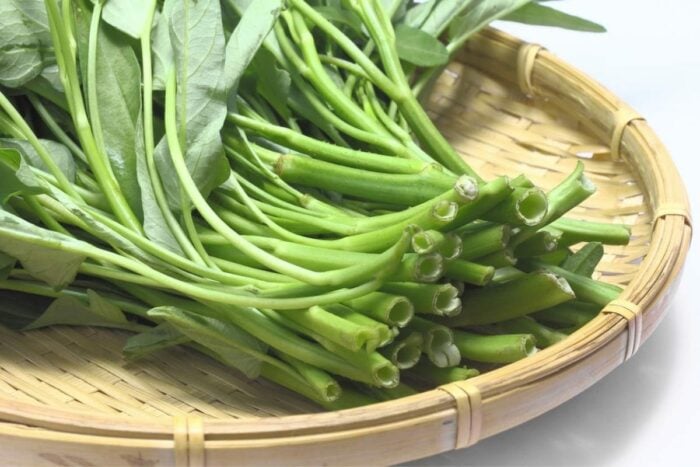
Chinese Water Spinach(空心菜)
This Asian veggie has hollow stems that grow in water or damp soil. It’s pronounced Nng choy in Cantonese or kōng xīn cài in Mandarin. It literally means vegetable with hallow heart or hallow center.
This vegetable is usually sold in a large bundle and can be as long as 16 to 18-inches in length. When cooking, we often dice away the bottom part 3-4 inches and dice it into 4 to 5 sections for stir fries. You can find this vegetable quite popular in Malaysian and Chinese restaurants.
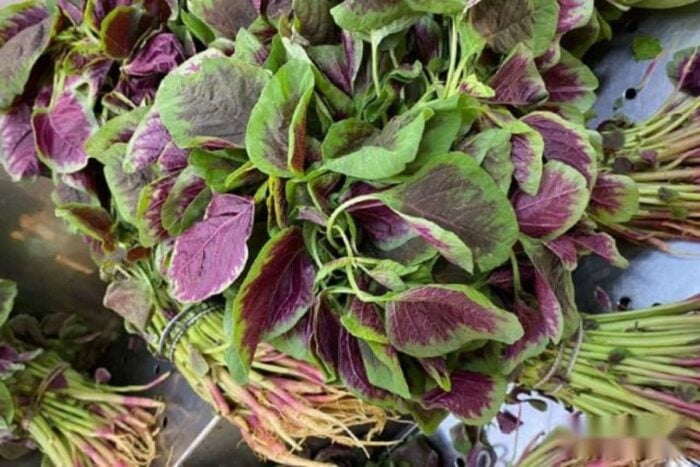
Chinese Spinach or Amaranth or en choy (苋菜)
Pronounce as xian cai, this Chinese spinach has a magenta color in the center of the leaves. The leaf textures are similar to spinach and the stems have a slightly crisp texture. After you trim away the bottom end and dice it into bite-size sections, you can simply stir-fry it with some minced garlic, salt, and oil. Because of its color, this dish will have a magenta color.

Taiwanese Spinach – Táiwān bō cài (台湾菠菜)
Taiwanese spinach has a very similar flavor profile and texture to the common spinach we have in supermarkets. Taiwanese spinach is much taller (in length) than regular Western spinach and the stems are slightly more firm and with a crisp-tender texture.
Even though this Asian green looks bigger and taller than regular spinach, the texture is still very tender, juicy, and crisp. In my opinion, it’s easier to cook Taiwanese spinach than regular spinach because it’s harder to overcook. You can use it in spinach soup with meatballs, saute, or blanched for Japanese gomaae salad, or make paleo creamed spinach, just like how you’d use it for common spinach!
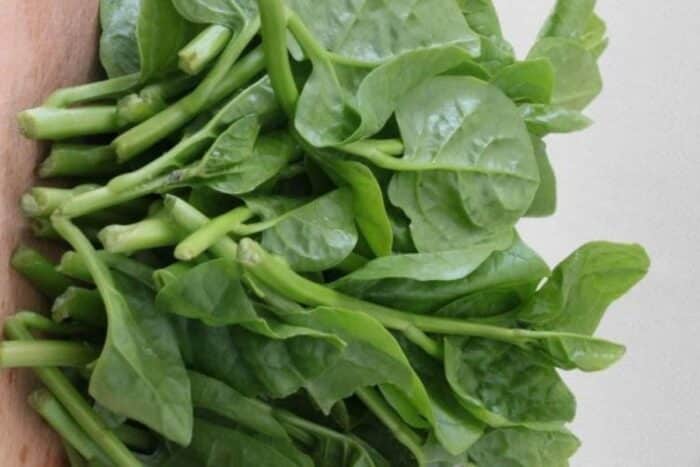
Malabar spinach (木耳菜)
Pronounce mù’ěr cài in Mandarin, meaning wood ear spinach. This Chinese spinach has an interesting texture that’s almost similar to okra with a slight hint of lemony flavor. If you are not a fan of okra or slimy texture food, then this spinach is probably not for you.
Fun fact, I actually found Whole Foods had Malabar spinach one day. I’m not sure if they purchased it from a vendor by mistake or thought it was something else, Malabar is not that common to find in Western supermarkets. You can use it to saute with some garlic and salt or add it to a hot pot or keto egg drop soup. It’s also quite popular in Southeast Asia.
Cabbage
Chinese Napa Cabbage (大白菜)
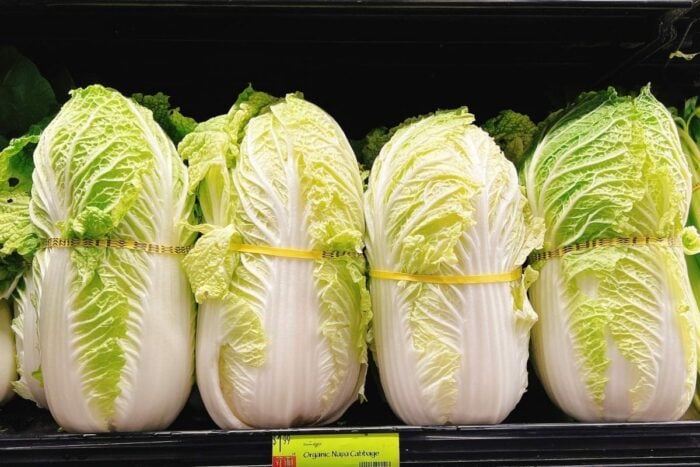
Napa cabbage is probably the most known Asian veggie in Western markets. My readers LOVE this cabbage. It’s quite large in size and the stalks are in pale white color and with pale green to light yellow-ish wrinkled leaves.
To make it even more confusing to my western readers (sorry!), Napa cabbage is called da bai cai (大白菜) in Mandarin, which translates to Big Bok Choy. As I mentioned earlier in the post, bok choy just means white vegetable so strictly speaking, if you walk into a traditional Asian market and ask for Bok choy, people might not know what you are referring to.
Napa cabbage has a sweet-juicy flavor that’s loaded with umami (savory-deliciousness) after it’s cooked. This vegetable also contains a lot of water. I like to use it in soups, stir-fries, stews, or finely dice it for salads and Napa cabbage slaw. Here are some napa cabbage recipes you can try – stir-fried napa cabbage, Napa cabbage casserole, Chinese cabbage stir-fry, Chicken stir-fry with napa cabbage, Sauteed napa cabbage with shiitake, and Instant pot chicken napa cabbage soup.
Taiwanese Cabbage (white cabbage)
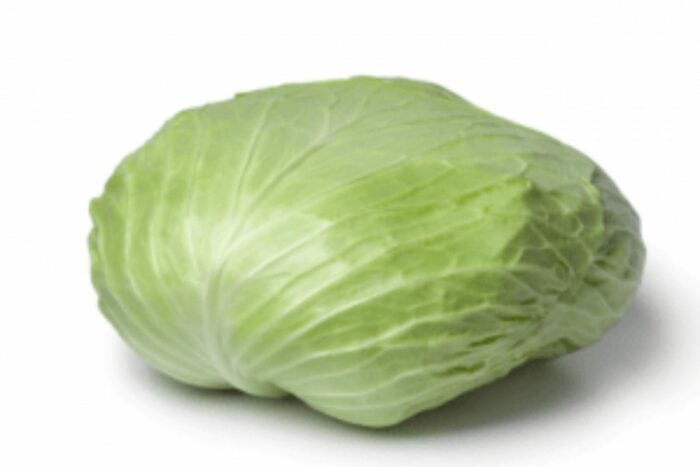
Taiwanese cabbage is beloved by Taiwanese people and people around the world. Once you taste Taiwanese cabbage, you’ll be hooked and never go back to green or purple cabbage!
Also known as white cabbage, Taiwanese cabbage looks similar to green cabbage but the shape is less round and almost flat-ish which looks like a big round disc shape. This cabbage is less dense in texture compared to green cabbage and contains a lot of sweet taste and crunchy texture once it’s been cooked. The best way to enjoy it is a simple saute with some garlic, salt or shiitake mushroom powder, and olive oil. You can find how I use it in my Sauteed Taiwanese cabbage recipe.
Savoy Cabbage
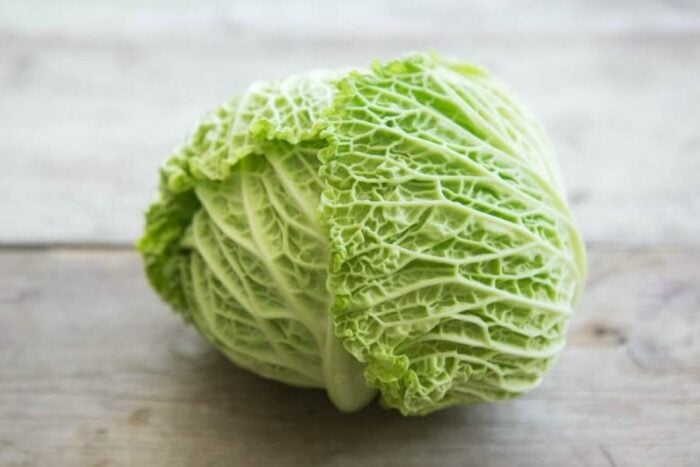
Savoy cabbage is originally from Europe, Although it’s not an Asian veggie, it’s quite popular in many Chinese cuisines. The leaves are wrinkled and the texture is more sturdy than Napa cabbage yet the flavor is much milder than green cabbage, it’s perfect for stir-fries like my Asian chicken cabbage salad. I also use it to make my keto dim sum that’s wrapped in savoy cabbage leaves, which is my very first Chinese vegetable dishes when I just started my blog in 2016 and the dish became super popular on the internet.
Chinese Celery (芹菜)
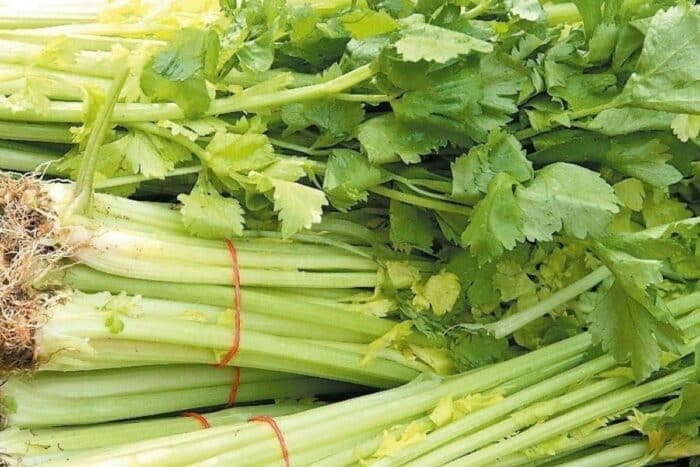
Pronounced qín cài in Mandarin. Chinese celery is much taller and leaner in shape than Western celery. But just because they look leaner, Chinese celery actually packs a strong flavors flavor than regular celery.
Similar to how we usually prepare celery for cooking, dice the stalks to bite sizes and discard the leaves as they usually taste more bitter. I like to add them to stir-fries with beef or pork. Taiwanese people also use it as a cold appetizer or side dish. We blanch the Chinese celery and season with a little salt, toasted sesame oil, and white pepper to make a super lovely and refreshing Asian side dish.
Recipe
My carrot-celery slaw recipe uses regular celery but it’s modeled after Chinese celery. You can also use Chinese celery to replace peppers in my Chinese pepper pork stir-fry dish.
Chinese Mustard Greens (芥菜)
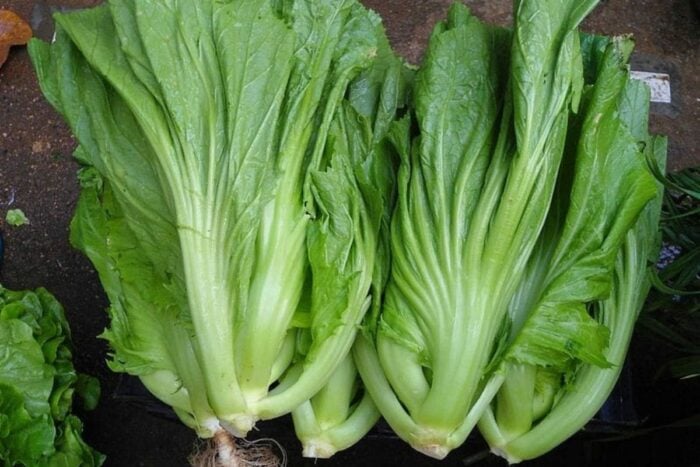
Chinese mustard greens or jiè cài in Mandarin pronunciation is a very healthy Chinese veggies. Sometimes also known as leaf mustard, mustard cabbage, or gai choy, Chinese mustard greens have a thick curvy stalk in green color. It depends on the vendor, sometimes this vegetable comes with green leafy parts, and other times the leaves are almost trimmed away. This is because we use stalks for cooking whereas the leaves are also edible but most often it’s incorporated into pickled vegetables – preserved Chinese mustard greens. You can see how I use it in Taiwanese beef stew and Chiang mai khao soi.
Chinese mustard greens have a bitter flavor therefore the best way to use this Asian greens in cooking is to hot water to blanch it first, then stir-fry with some minced garlic, ginger, and salt.
I have a copycat version of Din Tai Fung’s Chinese Mustard Greens on the blog. It’s really delicious and super refreshing.
Pea Shoots, Snow Pea Leaves, or Pea Tips ( 豌豆苗)
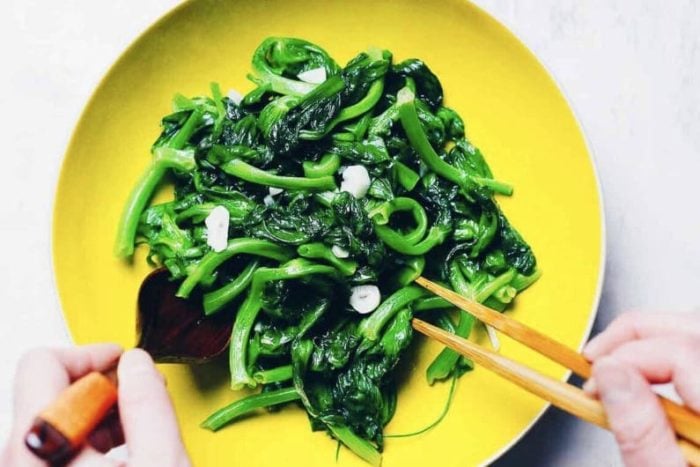
Snow pea leaves, snow peas, or pea shoots (pronounce dòu miáo in Mandarin) are beloved Asian greens in Asia. It is a cold-weather vegetable so most of the time you’ll find the most tender ones available in the fall and winter seasons in North America.
Snow pea leaves have a mild and sweet-tender flavor. The leafy part tastes similar to spinach and the tender pea shoot stems are actually hallowed in the center therefore they are a little crunchy. The best way to enjoy this delicious Chinese veggie is to saute it with minced garlic, salt, and some oil like my Sauteed snow pea leaves recipe.
Tong Ho – Edible Chrysanthemum (茼蒿)

I associate Tong Ho with hot pots in the wintertime with family and friends! Tong Ho has a special flavor that’s aromatic and slightly bitter. Both the leafy parts and the stems of this Chinese veggies are edible. Trim away the bottom tip end and dice Tong Ho to bite sizes. My family like to add Tong Ho to hot pots or soups and stews such as lion’s head meatballs.
Yam Leaves – Dì Guā Miáo (地瓜苗)
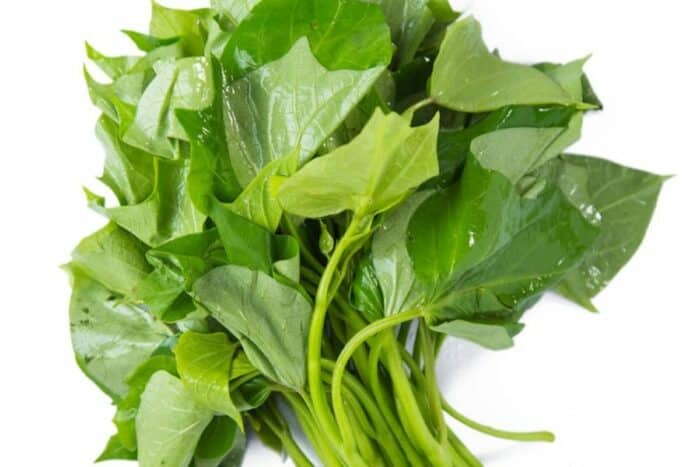
Yam leaves are also known as sweet potato leaves. Yam leaves are low in saturated fat and cholesterol and high in vitamins, minerals, and Omega 3 fatty acids (source). They are mild in flavor and great for sauteing and stir-fries in Chinese vegetable dishes. The whole yam leaves are edible from the stems to the leafy parts but the most nutritious part is the leaves. Select ones that are in vibrant deep green color and with no dark brown spots on the leaves. Similar to many Asian vegetables, a quick saute with some minced garlic, salt, and oil are all you need to enjoy this healthy vegetable.
Please note that potato leaves are not the same as sweet potato leaves (or yam leaves). Potato leaves are actually not edible because are quite high in solanine and chaconine, which is toxic to humans and animals. You can learn more about it here.
AA Choy – AA Cai (AA 菜) or You Mai Cai (油麦菜)

AA Choy, also known as You Mai Cai, is the leafy part of Celtuce (wō sǔn). It’s very popular in Taiwan and China. The leafy portion or Wo Sun is tender and crisp. You can stir-fry wo sun or blanch it and serve it with vegetarian oyster sauce or sha cha sauce with a few drizzles of chili garlic sauce. In Taiwanese street food markets, the vendor often serves AA Choy with a spoonful of Taiwanese meat sauce with soy sauce and bamboo shoots. It’s absolutely delicious!
Tatsoi (塌棵菜)
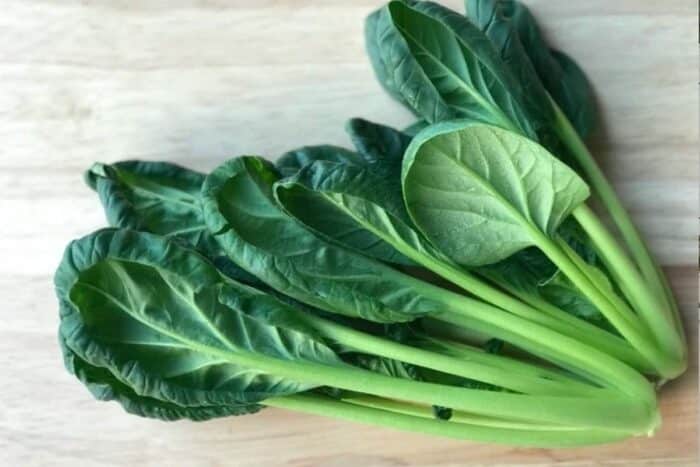
Tatsoi (pronounce tā kē cài in Mandarin) has become more and more popular in the U.S. The most common type of Tatsoi we see in Western supermarkets are baby version with tender leaves that almost look similar to baby spinach leaves. The full-size tatsoi comes with wrinkly leaves and crisp-tender stems and I’ve seen them in green or deep brownish color. The leaves are wrinkled and bundled into a large flower-ish shape.
I like to use the baby tatsoi for salads like my tatsoi salad and the regular-size tatsoi for stir-fry.
Watercress (西洋菜, xī yáng cài)

Watercress originally came from Europe and Asia (source). It tastes peppery and a little bit spicy when it’s raw but once you saute it the flavor becomes milder. Watercress is rich in vitamins, potassium, and Iodine (source). My favorite way of enjoying watercress – similar to many Chinese vegetable dishes – is a simple stir-fry with minced garlic, salt, and oil.
Celtuce (莴笋, wō sǔn)
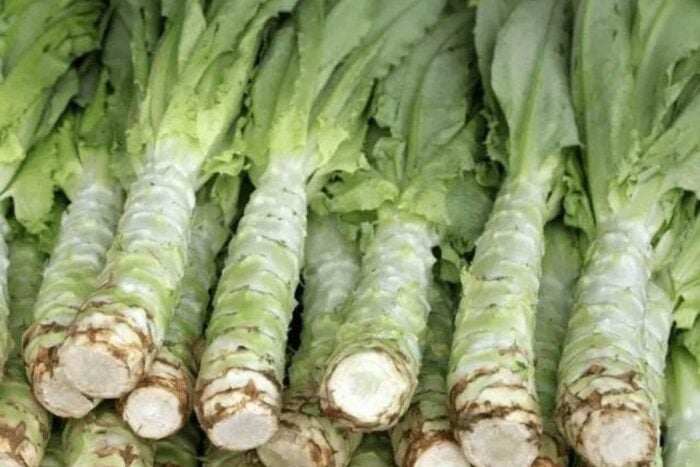
Also known as Stem Lettuce, Celtuce is the stem part of AA Choy. The leafy portion of Celtuce is called AA Choy whereas the stem portion is called celtuce or Wo Sun. Don’t feel intimidated when you see this vegetable, it’s actually very easy to prepare and delicious.
To prepare Chinese Celtuce, you dice away the bottom tip end which is usually tough and dry, and use a vegetable peeler to peel away the outer skin. You can dice it or julienne it for saute and stir-fry. The Celtuce flavor is subtle but has a stronger lettuce flavor and a crisp texture. It’s often used in stir-fries with pork or beef with a sweet/savory sauce, such as homemade hoisin sauce. You can use celtuce in place of celery in many Chinese stir-fry recipes such as moo shu chicken, moo goo gai pan, black pepper beef, cumin beef, or black pepper chicken.
Now would you give these recipes a try? Leave a comment below and let me know! 🙂
Made a dish and loved it? Please rate the recipe and leave a comment in the section below! It helps my blog grow organically, allowing me to continue sharing free and awesome content with you. Thank you!

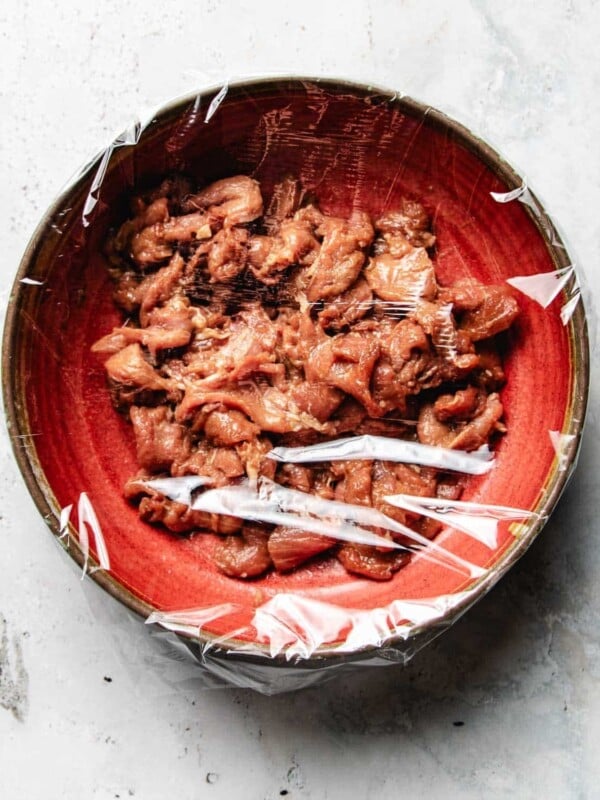
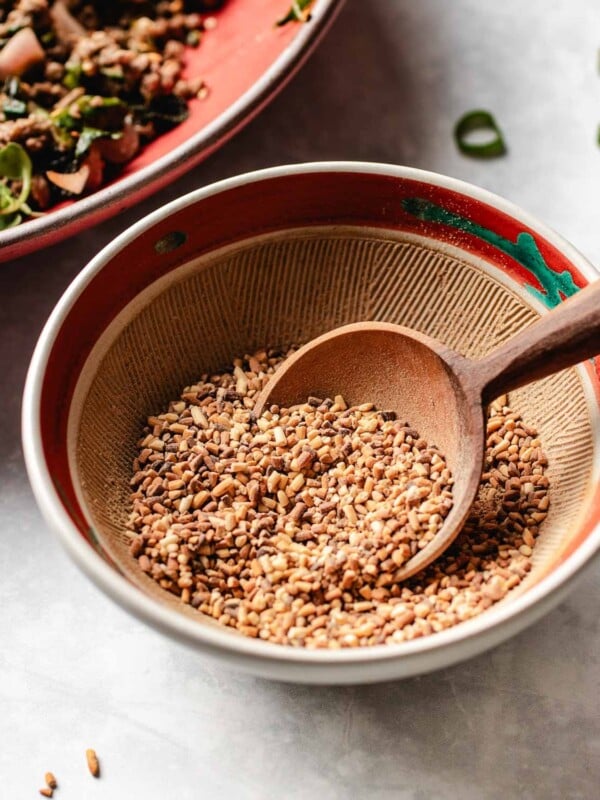










Do you have any Bitter Melon recipes? Especially Bitter Melon soup.
Hi Andy, not yet but I know that soup really well. I have some similar ones where you can add bitter melon to the pot – https://iheartumami.com/winter-melon-chicken-soup/ or https://iheartumami.com/pork-rib-soup-with-daikon/
I will add winter melon to my to-make list! Thank you so much. 🙂
Very educational. It helped me a lot to follow that u wrote them in chinese character as well since im Japanese. Thank you, i loved reading this <3
Thanks so much!
This is such an amazing and helpful post! Thank you! I cook with a lot of these but there are lots on the list I’ve never tried before – I’ll definitely start experimenting!
Thank you, Alex. So happy to hear!
Thanks for this–I love trying out new ingredients so very helpful of you to include not just a description but recipes.
Of course! And I’ll be adding more recipes here as I make more on the site! Thank you so much.
This is such a great guide, ChihYu. Takes me back to my childhood, and you’ve inspired me to try some vegetables that I never had growing up!
Thank you, Allison! Appreciate it!
Thank you for this comprehensive Asian greens guide! Super helpful. Thanks!